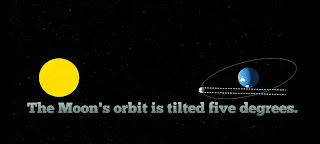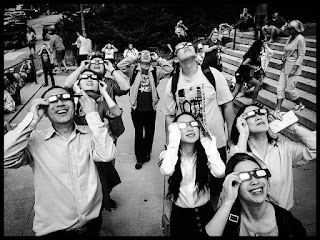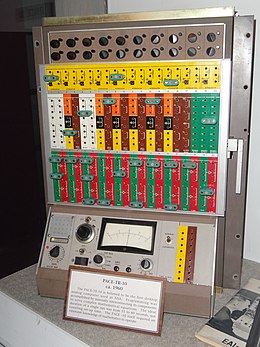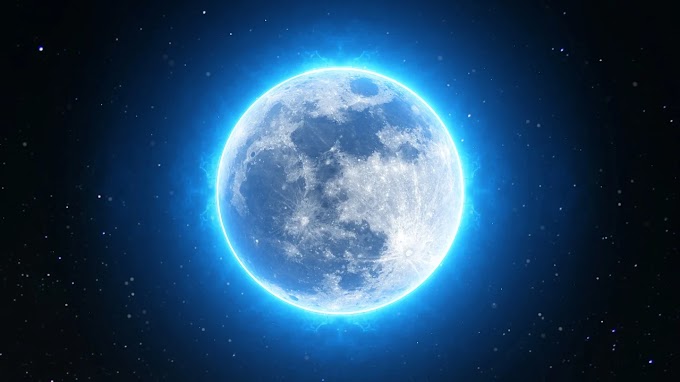Solar eclipse
A solar eclipse happens when a new moon moves between the Earth and the sun, blocking some or all of the sun's rays from reaching the Earth. By cosmic chance, even though the sun is 400 times wider than the moon, it's also 400 times farther away. Therefore, the two objects appear the same size in our sky.
Astronomers are able to predict eclipses because the Earth and moon have very predictable orbits.
Why, then, isn't there an eclipse every month?
The moon's orbit is usually tilted a few degrees north or south in relation to the Earth. When the moon does eclipse the sun, it casts two types of shadows on Earth: a smaller, darker shadow, known as the umbra, and a larger shadow, known as the penumbra.
There are four types of solar eclipses.
The first and most spectacular is a total eclipse, when the moon completely covers the sun's surface. A total eclipse can only be seen if you're standing within the umbral shadow. That's why the imaginary line created by this shadow as it races across Earth is known as the path of totality.
People within the penumbral shadow see only a partial eclipse, the second type. From this view, outside the path of totality, the moon passes in front of the sun off-center, never fully covering its surface.
Third, an annular eclipse, occurs when the moon passes directly in front of the sun. However, unlike a total eclipse, the moon appears too small to fully cover the sun. The moon's orbit is elliptical, so sometimes it's closer to Earth, and sometimes it's farther away.
Last, a hybrid eclipse, is when the moon's position between the Earth and sun is so finely balanced that the curvature of the Earth plays a role. The moon will be farther away from some parts of Earth along the eclipse's path, resulting in an annular eclipse. In other parts, the moon will be just close enough to fully cover the sun, resulting in a total eclipse.
While a total solar eclipse happens somewhere on Earth every year or two, any given point on Earth experiences the event only about once every 400 years. Looking directly at the sun, even during an eclipse, can cause permanent eye damage. Fortunately, there are ways to enjoy an eclipse safely. The easiest is to use certifiedeclipse-watching glasses, which are shaded thousands of times darker than typical sunglasses. You can also look at the eclipse indirectly by making a pinhole viewer. Simply poke a small hole in a piece of cardboard. Hold the cardboard up to the sun, allowing the sun's image to be projected onto a flat surface. Be sure to look only at the surface and not through the cardboard. Just before the moon completely covers the sun, low-lying valleys on the moon's edge will be the only spots that sunlight continues to pass through. These remaining brilliant shafts of light, known as Baily's beads, will disappear one after another. And finally, a single bead of light remains, known as the Diamond Ring, signaling that you're just seconds away from experiencing totality. Once the last bead disappears and the moon completely covers the sun's surface, the view through your eclipse glasses will be pitch black. Totality achieved.
At this point, none of the sun'rays are reaching your eyes, and it's the only time that it's safe to take off your glasses. Remember to put your eclipse glasses back on before any of the sun's rays start to peek through again. Any sunlight reaching your eyes, even for a few seconds, can cause serious damage. While an eclipse can last a few hours, totality typically occurs for less than three minutes. Animals and plants have also been known to alter their behaviorduring a total eclipse. Songbirds may stop singing, crickets may start chirping, and flowers might even start to close up. We won't always be able to see total solar eclipses. The moon moves about one and a half inches away from Earth each year. It's estimated that in about a billion years, the moon will be too far away from Earth to completely cover the sun.
Do you want to know?









0 Comments